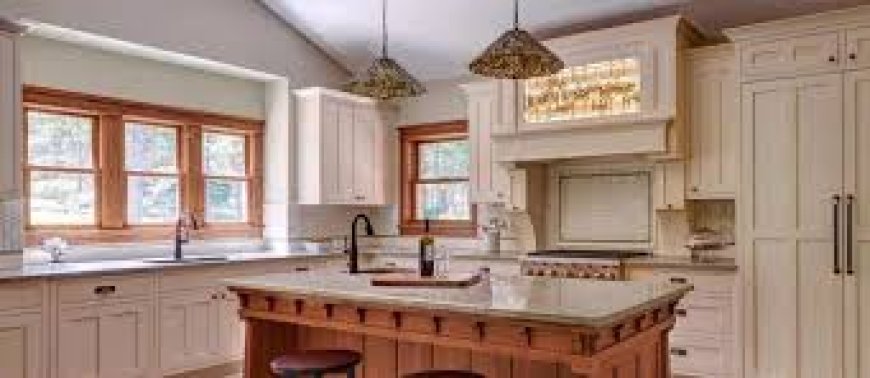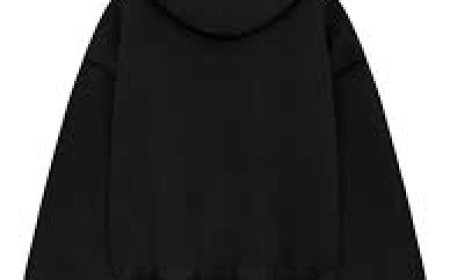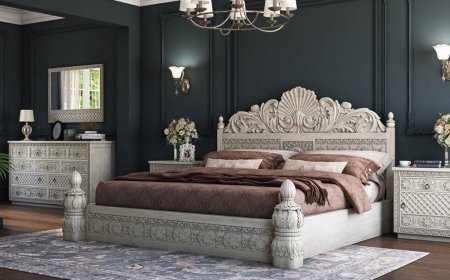How Custom Wood Hoods Elevate Kitchen Design and Ventilation
Discover how custom wood hoods enhance kitchen aesthetics and improve ventilation, blending design and function for a stunning, efficient cooking space.

When it comes to designing the perfect kitchen, the balance between form and function is key. Among the many elements that contribute to both the visual appeal and practicality of a kitchen, the range hood plays a critical role. While traditional stainless-steel hoods are functional, custom wood hoods offer an elevated design option that combines beauty with ventilation efficiency. More than just a design statement, these wood hoods have become a popular choice in both modern and traditional kitchens, allowing homeowners to express their style while improving air quality.
In this blog, we explore how custom wood hoods elevate kitchen design and improve ventilation, their benefits, popular styles, and how to choose the right one for your space.
1. The Aesthetic Appeal of Custom Wood Hoods
Timeless Elegance
Custom wood hoods are synonymous with craftsmanship and elegance. Unlike mass-produced metal hoods, these pieces are often handcrafted, adding a layer of artistry to the kitchen. The beauty of wood is its natural grain, which adds warmth and texture to a space, making the kitchen feel inviting and grounded.
Design Flexibility
One of the most significant advantages of custom wood hoods is their design versatility. They can be tailored to match any kitchen stylefrom rustic farmhouse to sleek contemporary. Whether you want a minimalist white oak hood or a richly stained cherry wood hood with intricate moldings, customization allows you to create a one-of-a-kind focal point in your kitchen.
Seamless Integration
Custom wood hoods can be designed to match your kitchen cabinetry, resulting in a cohesive and harmonious look. This seamless integration not only enhances the kitchen's overall appearance but also ensures that the range hood doesnt look like an afterthought.
2. Enhanced Ventilation Performance
While aesthetics are important, the primary purpose of a kitchen hood is ventilation. Proper ventilation removes smoke, grease, steam, and cooking odors, keeping your kitchen cleaner and healthier.
Power Meets Beauty
Custom wood hoods are built around powerful ventilation inserts or blower units. These high-performance systems effectively remove airborne particles, allowing homeowners to cook freely without worrying about lingering smells or poor air quality.
Reduced Moisture and Grease
A high-functioning custom hood helps prevent moisture build-up on walls and cabinets, reducing the risk of mold and mildew. It also traps grease particles, which can otherwise settle on kitchen surfaces, making cleaning easier and more manageable.
Improved Indoor Air Quality
Ventilation is crucial for maintaining good indoor air quality. Custom wood hoods equipped with efficient filters and ductwork systems help reduce carbon monoxide, nitrogen dioxide, and other pollutants produced during cooking.
3. Popular Styles of Custom Wood Hoods
Custom wood hoods come in a variety of styles, each offering unique design features that cater to different tastes:
1. Traditional Mantel Hoods
These hoods often include corbels, arches, and crown moldings. They are ideal for classic kitchens with detailed cabinetry and warm wood finishes.
2. Farmhouse/ Rustic Hoods
Featuring reclaimed wood, distressed finishes, and shiplap panels, these hoods are perfect for farmhouse and country-style kitchens.
3. Modern Minimalist Hoods
Sleek lines, subtle angles, and neutral stains or paints define these hoods. They fit beautifully into contemporary and Scandinavian kitchen designs.
4. Transitional Hoods
Blending classic and modern elements, transitional hoods might include clean lines with subtle trim, making them suitable for a wide variety of kitchen styles.
4. Customization Options for Maximum Impact
Custom wood hoods can be personalized in many ways to reflect your taste and complement your kitchen layout:
-
Wood Species: Oak, maple, cherry, walnut, and birch are common choices. Each type has distinct grain patterns and color tones.
-
Finish Options: Choose between stained, painted, or natural wood finishes to suit your cabinetry and dcor.
-
Molding and Trim: Add decorative corbels, crown molding, or fluted details for a more refined look.
-
Ventilation Inserts: Select the right blower size and filtration system to match your cooking habits.
-
Lighting: Many custom hoods include built-in lighting for enhanced cooking visibility.
5. Functionality Considerations Before Installing
Before investing in a custom wood hood, consider the following functional aspects:
Proper Sizing
Ensure the hood is appropriately sized for your cooktop. It should cover the width of the range and be mounted at a suitable height (usually 24-30 inches above the stove).
Ducted vs. Ductless
Custom hoods can be either ducted (venting outside) or ductless (using charcoal filters to clean and recirculate air). Ducted systems are more effective, while ductless ones are easier to install in apartments or kitchens with limited duct access.
Blower Power
Measured in cubic feet per minute (CFM), blower power should align with your cooking style. High-heat cooking like frying or grilling requires stronger ventilation (typically 600+ CFM).
6. Maintenance and Longevity
Custom wood hoods require regular maintenance to ensure they remain functional and attractive:
-
Cleaning: Wipe down the exterior regularly with a damp cloth and mild soap. Use degreasers for any build-up around the vent area.
-
Filter Maintenance: Wash or replace filters as recommended by the manufacturer, typically every 36 months.
-
Re-finishing: Depending on usage and exposure, you may need to re-stain or repaint the wood after several years to maintain its original look.
When well cared for, custom wood hoods can last for decades, making them a valuable long-term investment.
7. Why Homeowners Are Choosing Custom Wood Hoods
Custom wood hoods have grown in popularity for many reasons:
-
They increase property value by enhancing kitchen aesthetics and functionality.
-
They serve as a statement piece, often becoming the centerpiece of the kitchen.
-
They allow complete design freedom, ensuring your kitchen looks truly unique.
-
They offer long-term performance, combining efficient ventilation with durable craftsmanship.
8. Cost and Investment Value
While custom wood hoods are generally more expensive than standard hoods, they offer excellent return on investment. Prices can range from $800 to $3000+, depending on materials, craftsmanship, and ventilation equipment. For homeowners planning a kitchen remodel, including a custom hood often enhances both visual appeal and resale value.
Final Thoughts
A custom wood hood is more than just a kitchen applianceit's a functional art piece that brings warmth, style, and efficiency to your cooking space. Whether you're aiming for timeless charm or contemporary elegance, this upgrade can significantly transform your kitchens atmosphere while improving air quality and cleanliness. If youre designing or renovating a kitchen, dont overlook the transformative potential of a custom wood hood. It's a choice that brings both beauty and purpose into the heart of your home.






































